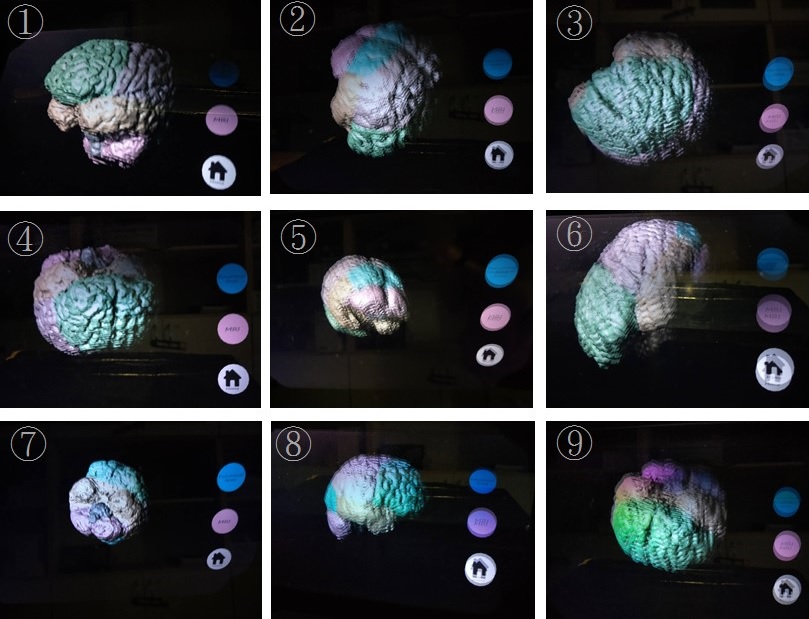
Two dimensional projections of three dimensional (3D) objects are used to teach anatomy. These projections are relatively unrealistic, and medical students cannot easily and accurately grasp the position and shape of each anatomical structure. As a remedy, 3D holographic projections allow for 3D anatomical structures to be projected in space without the use of worn contraptions. This study designed a method for optimizing 3D holographic projections with respect to the quality characteristics of 3D imaging definition and stereoscopic quality. The Taguchi method was used to determine the factors that most greatly influenced these quality characteristics, and the Delphi method and fuzzy theory were used to quantify image quality. Among three main factors of material of the projection panel, thickness of the projection panel, and angle made by the projection panel with the horizontal plane, thickness was the most influential. The optimal combination of factors was acrylic material, a thickness of 1 mm, and an angle of
Ming-Chung Chou, Tian-Hsiang Huang, Jinn-Tsong Tsai, Yen-Ming J. Chen, Kao-Shing Hwang, Wei-Tai Huang, Wen-Hsien Ho, "Optimization of 3D Holographic Projection for a Medical Image System using Taguchi Method and Fuzzy Inference System" in Journal of Imaging Science and Technology, 2023, pp 1 - 7, https://doi.org/10.2352/J.ImagingSci.Technol.2023.67.4.040402
 Find this author on Google Scholar
Find this author on Google Scholar Find this author on PubMed
Find this author on PubMed

